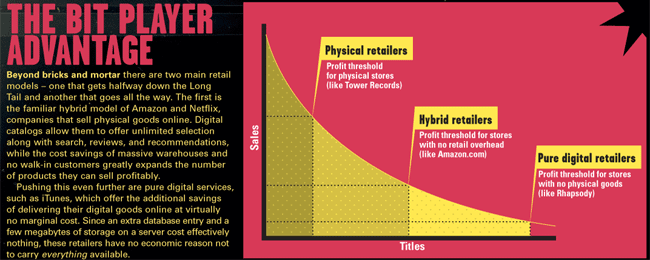Business Model
How does Netflix make money? What costs do they have?
Netflix is an online streaming on demand platform which provides subscribers a wide range of movies and TV-shows of different genres. The user is able to watch the content on a huge variety of devices without the interruption of advertisements. Netflix consists of domestic streaming, international streaming and domestic DVD (Netflix, Inc., 2017, p.2).
Netflix Business Model
Netflix offers a streaming on-demand service that is subscription based. This means, that the user has to pay a monthly membership fee to get access to the content. The user has the opportunity to choose between three fee packages that are including different streaming qualities and a different amount of same time watching screens. Furthermore, the user can join for a free month. The following graphic shows the current prices and features of membership in Australia.

(Anderson, 2004)
The average monthly revenue per paying membership was $8.61 in 2016.
The number of Netflix members worldwide increased from 93 million in 2016 to 103 million in 2017 and is consequently the biggest source of revenue (Netflix, 2017). The annual report of Netflix states, that the total revenue of Netflix in 2016 was $8.8 billion (Netflix, Inc., 2017, p.19). Moreover, the subscription fees are expected to claim $12.2 billion in 2020 (Digital TV Research, 2016).
Target audience
The target audience of Netflix ranges from people worldwide between approximately 16 and 60 years of age. This includes those with access to the internet who are interested in TV-series and/or movies. Therefore, in order to define their target audience Netflix has to pay more attention to psychographic aspects than to demographic (Pahwa, 2017).
Pahwa (2017) separated them in 3 basic groups:
1. people who are too busy to go out and shop for movies,
2. people who are frequent renters and movie buffs
3. people who want to get the most value for their money.
Cost of revenue
The cost of revenue of Netflix is separated into many different areas. The total cost of revenue mainly consists of marketing cost, licencing cost, production cost, research cost, technology and developing cost and cost for human resources (Pahwa, 2017).
Marketing cost:
The marketing of Netflix is mainly responsible for getting attention and distinguishing from other online streaming services. Therefore, Netflix needs a huge amount of advertising, affiliate marketing, device partners and incentives for the users to join Netflix, for example, the free one month trial.
Licensing cost:
Licensing is very important for a business like Netflix to make sure that users are streaming content in a legal environment.
Production cost:
Netflix started to produce Netflix exclusive content called ‘Netflix Originals’ in 2013. Even though the production costs for exclusive series and movies are very high, the company doesn’t have to pay licensing fees for this content.
Technology and development cost:
The whole business of Netflix is based on technological advances of the digital era. Hence, Netflix is working together with partners in order to ensure the users the best experience possible. However, technology and development require a lot of money (Pahwa, 2017).
Human resources cost:
Even though Netflix is an online business, human resources are often very underestimated In the end of December 2016, Netflix had approximately 4.700 total employees that all have to be paid (Netflix, Inc. 2017).
Business Canvas

The long tail of Netflix:
While the world we are living in is experiencing major shifts into the digital era, the theory of the long tail is becoming more relevant. Chris Anderson published the theory of the Long Tail the first time in the Wired Magazine in 2004. His theory is about the advantage in form of a niche of digital marketing and distribution on the internet compared to local and physical marketing and distribution (Anderson, 2004).
The major change of the business model of Netflix by introducing online streaming on demand instead of sticking to the distribution of physical DVD’s gave Netflix many additional advantages that can be explained by the long tail theory. Before the transformation, Netflix had limited capability of their stores, because only the popular DVD’s were worth to offer in order to cover their expenses. The main expenses of Netflix were not only the cost of the DVD’s but also the cost of workers, rent, and electricity. While Netflix changed its business model, the costs also changed. The costs for renting storage and buying DVD’s lowered significantly, whereas the cost for technology and online dataspace increased by a lot.
However, Netflix got rid of the limitations of their capability by relocating their marketing and distribution from retailers to the internet. This made it possible to offer a huge variety of movies and TV-series without having problems with geography and shelf space limitations.
The long tail theory says, most of the revenue is not made by the popular movies and TV-series but by the ‘long tail’, which is defined by the remaining huge number of movies and TV-series that are not that popular. This is due to the fact, that Netflix is subscription based, the long tail does not affect the revenue directly, but as Anderson (2004) said, that approximately 95 percent of all watched movies and TV-series were from the ‘long tail’ in 2004. Until today, the percentage of the long tail may be increased due to the increasing variety on Netflix (Anderson, 2004).

(Netflix, 2017)
The graphic illustrates the profit of different types of retailers by counting the sales and the titles. While physical retailers have the smallest tail due to the limitation of capability, the tail is increasing for hybrid retailers like Netflix and Amazon and nearly reaches its maximum for pure digital retailers.